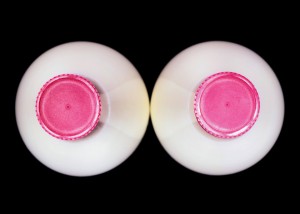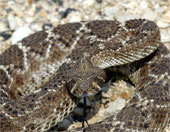
This montha??s Harvard Health Letter has an article about getting shingles a second or even a third time.??(Click here to read the full article.) The bottom line is that recurrence is a) certainly possible and b) if some recent research is??correct,??much more common than previously thought and about as likely as getting shingles in the first place if youa??re age 60 or older.
I talked to Barbara Yawn, M.D., director of research at the Olmsted Medical Center in Rochester, Minn., for the article and??mentioned??results??that she??and her colleagues??first presented at??a conference several years ago.
Yawn reported a more complete version of those results in last montha??s issue of the Mayo Clinic Proceedings (a favorite journal of mine). Full text of the study isna??t available unless you have a subscription to the journal, but here’s a summary (in medical publishing, such summaries are called abstracts.)
Melinda Beck, a health columnist for the Wall Street Journal, ??had a column??about shingles last week and this??how she??neatly summed up Yawna??s research:
For the new study on shingles recurrence, researchers at the Olmsted Medical Center in Rochester, Minn., examined medical records of nearly 1,700 patients who had a documented case of shingles between 1996 and 2001. They found that more than 5% of them were treated for a second episode within an average of eight yearsa??about the same rate as would typically experience a first case.
And here is a link to the Journal Watch item of the??study and a short comment by the Journal Watch editor. Journal Watch is a monthly newsletter published by the Massachusetts Medical Society that summarizes and comments on recently published research.
In the Mayo Clinic Proceedings paper, Yawn and her colleagues report that 95 of the 1,669 people with an a??indexa?? case of shingles got shingles again over the course of a follow-up period that averaged 7.3 years, which??works out to about 5.6 percent??of the shingles sufferers.??Six??people had two recurrences and two had three! The timing of recurrence varied from 96 days to 10 years after the initial episode. In??45 percent of those who got shingles again, the site of the recurrence was in a different region of the body than the site of the first case. They also noted that the single biggest risk factor for having a second case of shingles was having pain that lasted 30 days or longer during the first case.
Other studies have shown the recurrence rate to be much lower. Yawn and her colleagues said a longer follow-up period is one explanation for their results:
Studies that include 1 to 2 years of follow-up may underestimate the average yearly recurrence rates over a lifetime. A reliable estimate of HZ [HZ stands for herpes zoster, the more formal medical term for shingles]??requires several years of follow-up. In our study, few recurrences occurred in the first 12 to 18 months after the index case, except in those who were immunocompromised. Our two-year recurrence rate (2.0%) is similar to that reported by Donahue et al but is poorly predictive of the eight-year recurrence rate.
They also said their study probably did a better job than most at capturing all the shingles cases:
Unlike other studies, our cohort came from a community-based population with a well-established infrastructure to report administrative diagnoses and allow access to medical records for in-depth review. The ability to obtain follow-up information across all health care facilities within the county is likely to have ensured a high degree of completeness of recurrence identification.
There is a vaccine against shingles. It’s called Zostavax and it’s made by Merck (Merck funded Yawna??s research, along with the National Institute of Arthritis and Musculoskeletal and Skin Diseases and the National Institute on Aging). Zostavax isna??t guaranteed protection against shingles. But in the large clinical trial that led to its approval by the FDA, the vaccine??did cut the risk of getting shingles in half and the risk of pain that lingers after the signature shingles rash is gone, called postherpetic neuralgia, by even more.
So should people who have had shingles get the vaccine to lower their??chances of getting it again?
Thata??s what the March 2011 Health Letter article is about, and youa??ll find more details there (click here for full-text access to the article.) Factors to consider are cost (Medicare coverage is funky), side effects (it seems from a study published last year that you dona??t need to worry about major side effects), and, yes — the chance that youa??ll get shingles a second or even third time (the risk is??real enough, if Yawna??s research is to be believed, and perhaps especially so if your first bout of shingles included a long period of lingering pain).
But quickly, a key point: Zostavax may very well protect against shingles recurrence, but thata??s an??assumption at this point. No studies have been done that show that to be the case. When I asked Merck officials about this, I was told??via email that no such study is planned.
- Peter Wehrwein, Editor, Harvard Health Letter
s

 Occasionally, I see patients who have received throat swabs for strep that have come back positive… even if they have no signs or symptoms of pharyngitis.
Occasionally, I see patients who have received throat swabs for strep that have come back positive… even if they have no signs or symptoms of pharyngitis.

 do psychotherapy. It would start with a section on What Makes a Good Therapist? What does she thinks makes a good therapist? Real life experiences which impart an ability to empathize. Do we grow from our own difficulties? More specifically, do we grow in to better therapists? I asked another shrink this, and he said that people like to believe there is some meaning to their suffering, and perhaps it’s nice to believe that if you’ve been stuck suffering, then it makes you a better therapist, but he wasn’t so convinced it was true. Me? I don’t know, maybe. Or maybe not. Personally, I’m fine with the idea of not suffering, at all, ever again, so long as I live.
do psychotherapy. It would start with a section on What Makes a Good Therapist? What does she thinks makes a good therapist? Real life experiences which impart an ability to empathize. Do we grow from our own difficulties? More specifically, do we grow in to better therapists? I asked another shrink this, and he said that people like to believe there is some meaning to their suffering, and perhaps it’s nice to believe that if you’ve been stuck suffering, then it makes you a better therapist, but he wasn’t so convinced it was true. Me? I don’t know, maybe. Or maybe not. Personally, I’m fine with the idea of not suffering, at all, ever again, so long as I live. Sideways Shrink posed a great question recently in a comment on my post “When A Thick Skin Helps.” The question was whether or not physicians are allowed to hit a patient who tries to assault them.
Sideways Shrink posed a great question recently in a comment on my post “When A Thick Skin Helps.” The question was whether or not physicians are allowed to hit a patient who tries to assault them.








 Eastern coral snake, photo courtesy of Norman Benton, CC-BY-SA 3.0
Eastern coral snake, photo courtesy of Norman Benton, CC-BY-SA 3.0 Western diamondback (a type of crotalid), photo courtesy of Clinton & Charles Robertson, CC-BY-SA 2.0
Western diamondback (a type of crotalid), photo courtesy of Clinton & Charles Robertson, CC-BY-SA 2.0
 I am a poster
I am a poster 



 “Are you a super-spreader?” That’s the catchphrase for a new study out of the University of Cambridge. However, if you answered “yes”, you may want to stay home and cover your mouth, because the study was designed to track the spread of influenza using cellular
“Are you a super-spreader?” That’s the catchphrase for a new study out of the University of Cambridge. However, if you answered “yes”, you may want to stay home and cover your mouth, because the study was designed to track the spread of influenza using cellular 